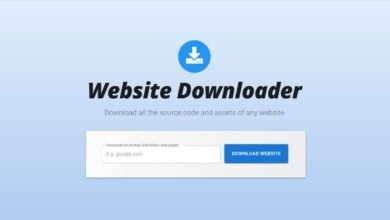Learning is of critical importance for business success. With the help of new tech, organizations can now plan ahead with precision and adjust their training programs on the go with ease.
HR teams, in particular, should learn to reap the benefits of new technologies and polish feedback mechanisms for enhanced results.
For starters, they need to define which training types are ideal for employees, in alignment with organizational goals.
We’ll hereby consider some of the essentials in this context.
1. Orientation
Most organizations have an orientation process, which can take different guises. E.g., orientation can be either formal or informal as long as it serves the purpose of introducing new hires to the company dynamics, processes, and goals.
A well-designed orientation program typically communicates the company’s mission and values, key policies and procedures, an introduction to the leadership team, an overview of benefit plans, and distribution of orientation materials.
Learning from current HR trends demonstrates that the main goal of orientation sessions is to help new hires feel comfortable in their roles and empower them to be productive in their contributions to the team. Also, solid orientation sessions contribute to better interactions within teams and the business as a whole. As long as new hires become familiar with the work environment quickly, anything goes.
2. Onboarding
Typically, orientation is a part of the broader employee onboarding process, but this is not always the case. Contrary to popular belief, not only new hires can benefit from orientation sessions.
However, it is critical to ensure that all new employees are aligned with organizational goals and culture, and onboarding is critical in this aspect. That’s why implementing proven processes is of crucial importance; HR teams need to be well-versed in the onboarding procedure and be ready to adjust training materials on the go to suit individual learning preferences.
For starters, it is important to note that onboarding transcends completing paperwork for benefits and payroll. A beneficial onboarding program helps new hires integrate into the company culture, dealing efficiently with long-term retention thereby.
In addition, an effective onboarding program should highlight available career opportunities, inform new hires about learning and growth opportunities, provide an overview of responsibilities and expectations, and include necessary compliance training.
3. Soft Skill Training
Soft skills are the single most important component contributing to effective interactions among employees. They prop up teamwork, leadership, communication, and problem-solving.
However, not all soft skills have been made equal. That’s why the focus should be on effectively communicating as a leader, teamwork, time management, interpersonal skills, conflict resolution skills, and creativity.
Soft skill training can be challenging in itself as it is subjective by default. However, there are varied approaches to consider to suit individual preferences.
Typical examples include group- and individual role-playing sessions, team-building activities, coaching on communication style, and celebrating group achievements.
Developing soft skills helps employees adapt to various situations and helps them build self-esteem and productivity.
4. Safety Training
Safety training involves educating employees on safety procedures to minimize the risk of injuries. This program should cover a range of topics, including emergency procedures and ergonomics. The focus is on the procedures to keep everyone safe at work.
Even though different industries come with different hazards, the first step in safety training always remains the same: identifying hazards. Recognizing potential hazards in the work environment is critical but it is equally important to minimize risks.
This is typically done by implementing processes that reduce risks, which are closely related to the target industry. E.g., office workers may benefit from the no bags on the floor rule, whereas field service workers can benefit from an entire set of specific procedures, including using AI software effectively.
Businesses need to comply with all regulatory standards and communicate clearly the personal benefits of safety procedures to employees.
Augmented Reality Learning
AR learning is one of the best ways to impart knowledge. Being a mixture of a computer-generated environment and the surroundings, AR interacts with the users, providing different experiences to different people.
AR apps integrate with other technologies, which makes them particularly engaging. At the present time, the preferred device for AI learning is the smartphone, but trends change fast. Hence, it is critical for HR teams to keep informed about the latest developments in the field and adjust training procedures accordingly. E.g., AR glasses are trending as we speak, but who is to say what the future will bring?
Teach Engagement
Finally, employees should employees should be aware of the importance of employee engagement. An engaged workforce is certain to drive success in the long run, so HR teams should make every effort to teach employees how to be more engaged and productive.
While this may sound vague, there are actually many ways to perform this task. The key is in establishing a supportive culture where every employee recognizes the importance of helping colleagues rather than tripping them.
Regardless of the approach HR teams embrace, the elements of teaching engagement should observe strategic alignment, processes in place, transparent communication, a clear understanding of processes, and helping employees achieve their goals.
Everything considered, learning methods and approaches may differ greatly, but as long as they aim to achieve the predefined goals, HR teams can get as creative as they wish. Experimenting with different approaches is also advisable as different personalities prefer different approaches.
You may also read: The Pizza Edition




